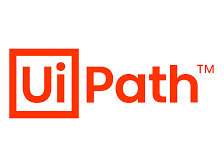What Is Maven In Devops
What is Maven?
Maven, at its core, is a build automation and project management tool. It is designed to manage the entire lifecycle of a software project – from conception and development to testing and deployment. Maven’s primary purpose is to provide a uniform build system, ensuring consistency in the development process and making it easier to manage dependencies.
Key Features of Maven:
- Project Object Model (POM): Maven utilises a Project Object Model, represented by an XML file (pom.xml), to define the project’s configuration, dependencies, and build settings. This standardised structure enhances project clarity and makes it simpler to share and collaborate across development teams.
- Dependency Management: Maven excels in managing project dependencies. By specifying dependencies in the POM file, Maven automatically downloads and includes the required libraries, reducing the complexity of managing external components.
- Build Lifecycle: Maven follows a predefined build lifecycle, consisting of phases such as compile, test, package, and deploy. Developers can execute specific build phases as needed, enabling fine-grained control over the build process.
- Plugin Architecture: Maven’s extensibility is facilitated through a rich set of plugins. These plugins enhance functionality, allowing developers to tailor the build process to suit specific project requirements. Popular plugins cover areas like source code analysis, documentation generation, and integration with version control systems.
How Maven Facilitates DevOps:
- Consistency Across Environments: Maven’s dependency management ensures that all developers, irrespective of their environment, work with the same set of libraries and dependencies. This consistency minimises the “it works on my machine” issue, promoting collaboration and reducing deployment-related challenges.
- Automated Builds: Maven automates the entire build process, from compiling source code to creating executable binaries. Automation streamlines development workflows, accelerates the delivery pipeline, and minimises manual errors.
- Continuous Integration (CI) Integration: Maven seamlessly integrates with CI tools like Jenkins, Travis CI, and GitLab CI, enabling continuous integration practices. Automated builds triggered by code commits facilitate early detection of integration issues and promote a more reliable codebase.
- Efficient Dependency Management: Maven’s centralised repository system ensures efficient management of project dependencies. This central repository stores commonly used libraries, reducing the need for manual intervention in downloading and managing external dependencies.


